Let's say I have two objects, which might have some properties in common. The overall idea is that one is used as a schema to compare it to the other. I would like to compare values of common properties and construct a new object representing these comparisons of each individual property. In the result, any properties in common should have the value of comparing the source properties for equality (e.g. result.a.b.c = (obj1.a.b.c == obj2.a.b.c)). Any properties that exist on only one of the two objects would be copied to the result with their original values.
For example, consider the following objects to compare:
const schema = {
num: 123,
str: 'hello',
nested: {
num: 123,
str: 'hello',
},
},
doc = {
nums: [1,2,3],
str: 'hello',
nested: {
num: 123,
str: 'world',
foo: 'bar',
},
};
The comparison result should be:
{
nums: [1,2,3], // obj2.nums
num: 123, // obj1.num
str: true, // obj1.str == obj2.str
nested: {
num: true, // obj1.nested.num == obj2.nested.num
str: false, // obj1.nested.str == obj2.nested.str
foo: 'bar', // obj2.nested.foo
},
}
How would I perform this comparison in the most efficient time and space way?
Currently I have this implementation:
function deepCompare(obj1, obj2) {
const validatedObject = {}
Object.keys(obj1).forEach(e => {
if(object[e].constructor.name === 'Object') {
validatedObject[e] = deepCompare(obj1[e], obj2[e])
} else {
validatedObject[e] = obj1[e] === obj2[e]
}
})
return validatedObject
}
Are there any ways to do this more efficiently without using JSON.stringify, because I might have property that is missing, but I still want to return the fact that the values are correct despite the schema of those objects?
Maybe for in or for of loop? But how would I test their effectiveness? It's okay for small objects, but sometimes they get really big and I want to compare them in the most efficient way possible.
NOTE for editors.
I understand that this might seem like a duplicate, but it in fact is not, here I'm looking for a most efficient way to compare values, iteratively, recursively or some other way, not objects themselves
